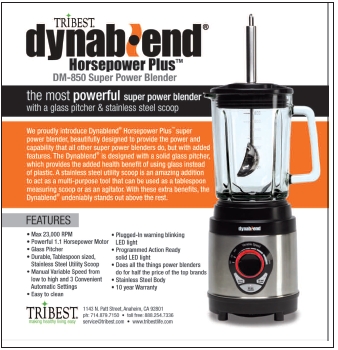Chips. Cookies. Nuts. Popcorn. America has a love affair with snacks.
The Snack Food Association’s 2013 State of the Industry Report showed steady dollar increases in snack nuts/seeds/corn nuts (10.9%); granola bars (6%); crackers (3.7%); non-chocolate candy (5.8%) and cookies (4.9%). The group pinpointed what consumers are looking for in must-have munchies, and healthy snacks (64%) and indulgent snacks (55%) were top priorities (1).
One of the hottest snacks in the healthy foods channel is popcorn. Approximately 996 million pounds were sold in the United States in 2012, and 70% of that was eaten at home (2)!

|
|
| Jean Arnold, founder of 479°. |
This month’s Gourmet Guru is Jean Arnold, founder of 479° (www.479degrees.com), which makes air-popped organic popcorn by hand in small batches. Drawing on her culinary training at Le Cordon Bleu in London, Arnold is an artisan popcorn expert who experiments with unique seasonings and flavor combinations in her line. Most ingredients are sourced from local family farms, and are sustainably grown and organic whenever possible.
WholeFoods: Which flavors are trending in the gourmet snacks category?
Arnold: I believe on-trend ingredients/flavors across other food categories and at restaurants translate well into the snack space. For example, seaweed, siracha, truffles and coconut. Asian flavors and hot/spicy seem to be hot right now.
WholeFoods: These flavors are definitely in demand. Your popcorn line has integrated them in some unique ways like White Cheddar & Black Truffle, Chipotle Caramel & Pumpkin Seeds, Farmers Market Herbs, and Toasted Sesame & Seaweed.
What are your thoughts about how and where “healthy” intersects with “gourmet snacks”?

|
|
| Arnold drizzling warm caramel onto a fresh batch of popcorn. |
Arnold: For some reason, people associate gourmet with indulgence. At 479°, we believe eating better-for-you snacks that are high in fiber, unprocessed (whole grain) and low calorie doesn’t mean you need to compromise on flavor. In fact, 479° is one of very few brands in the snack category that delivers on all three category drivers: 1) flavors; 2) low calorie; and 3) better-for-you attributes.
First, we deliver on delicious, gourmet flavors such as Toasted Coconut Caramel and Black Truffle, like you mentioned. At the same time, our savory flavors range anywhere from 35 to 55 calories per cup; our caramels are around 100 calories per cup. Last, all of our products are non-GMO, gluten free, and free of artificial anything. No trans-fat.
WholeFoods: Options in the snack foods category seem to be growing at a pace that we’ve never seen before. Yet, consumers, especially the health conscious, continue to be drawn to popcorn. Why do you believe popcorn is increasingly popular among shoppers?
Arnold: It’s unprocessed, whole grain and high in fiber. And, with interesting flavors that are hard to replicate at home, it makes it that much more compelling to purchase popped packaged popcorn. Also, each snack category has had its natural revitalization or revolution. The tortilla chips category had its peak a few years ago and now, it’s popcorn.
WholeFoods: There are so many “breeds” of  popcorn kernels available. Your company airpops a fluffy, organic heirloom kernel. What special considerations do popcorn suppliers make when selecting appropriate kernel varieties for their products?
popcorn kernels available. Your company airpops a fluffy, organic heirloom kernel. What special considerations do popcorn suppliers make when selecting appropriate kernel varieties for their products?
Arnold: Choosing the right popcorn kernel is key. Most conventional, non-organic popcorn tastes like spongy nothing. They were bred to taste like nothing so they don’t interfere with artificial butter flavoring you put on top of movie theatre popcorn or microwave popcorn (which, sadly, still makes up the bulk of popcorn consumption in the United States.)
WholeFoods: How do you feel interest in non-GMO has affected the snack foods industry, where corn, canola and other GMOs are so prevalent?
Arnold: Personally, this has always been hugely important to me and 479°, way before it became a “trend.” Everywhere else in the world, consumers are well educated about non-GMO food and many developed countries around the world (like in Asia and Europe) ban GMO crops. I think the United States is way behind on non-GMO. Sadly, food industry lobbyists still have much influence over Congress. I can’t believe it took over 20 years of petitioning to finally ban trans-fat.
WholeFoods: Thanks, Jean, for sharing your insight on the gourmet snacks industry. Readers can tune into Part Two of our gourmet snack foods coverage here. WF
References
1. AIB International, “Snack Market Statistics,” www.aibonline.org/resources/statistics/snack.html, accessed Jan. 30, 2014.
2. The Popcorn Board, “Industry Facts,” www.popcorn.org/EncyclopediaPopcornica/WelcometoPopcornica/IndustryFacts/tabid/108/Default.aspx, accessed Jan. 30, 2014.
Published in WholeFoods Magazine, March 2014










